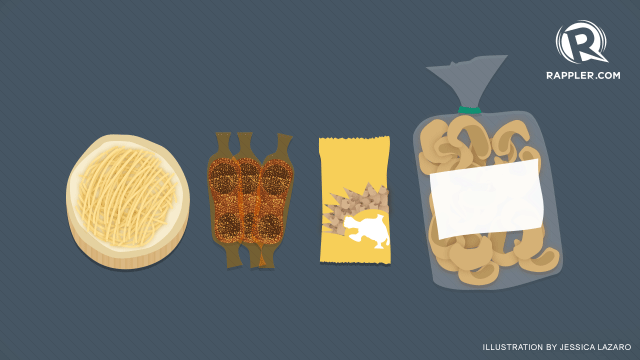SUMMARY
This is AI generated summarization, which may have errors. For context, always refer to the full article.
 “This is Sofia”− and then, with slight hesitation and almost as if an afterthought − “she’s from the Philippines.”
“This is Sofia”− and then, with slight hesitation and almost as if an afterthought − “she’s from the Philippines.”
This is how I have been introduced to friends’ families ever since I relocated to small and sleepy Williamstown, Massachusetts. So far, it seems like I’m the only Filipino in Williams College and in Williamstown, so my nationality has become my biggest identifier.
I had been to the United States many times before the start of my freshman year of college. I have family in Connecticut and a tita that, up until last year, was based in New York City. They have shown me what it is like to be Filipino—or, in the case of my cousin, Filipino-American—in Connecticut and in New York City. What it was like to be Filipino in Williamstown however, away from the family and established Filipino communities of these other two places, was something I had to discover on my own. In truth, it is something I am still working on discovering.
What I have learned thus far is that cultural difference isn’t as apparent or inhibiting as we may fear. Cultural difference isn’t a sign taped to your back that loudly advertises “I AM FILIPINO” or “I AM OTHER.” Cultural difference —especially between two cultures like those of the United States and the Philippines, which are surprisingly similar due to shared history—is much less conspicuous than one might suspect. In our age of globalization and increasing cultural awareness too, differences aren’t really glaring. They still are, of course, present.
There are differences in cuisine.
These are the most fun to discover. My tita sent me a care package my first winter with homemade ensaymada, sampalok candy, and packs upon plastic packs of Boy Bawang and Lapid’s Chicharon. While I saved the Boy Bawang for a time when I wouldn’t be charged with making the whole hall smell like garlic, I was surprised by my friends’ reactions to the food: my roommate and my best friend, both born and raised in California, were very excited to try the ensaymada and sampalok.
Everyone, of course, also loves hearing about our beloved culinary oddities. “What kind of cheese is cheese ice cream made from, exactly?” “So….. the duck fetus is in the egg?” and “Beans in a dessert? But why?” are questions that are constantly fielded my way. I find that more than being put off by the unfamiliarity of cheese ice cream, balut, and halo-halo, however, people here are curious. And, of course, hungry.

There are differences in experience.
These differences seem to provide endless amusement for my friends. I had never seen snow before my first winter at Williamstown, like many other Filipinas that venture to this side of the world. My friends were astounded that such an ordinary experience for them could be so foreign to me, and many of them have pictures of my first interaction with the wintry wonder: Me, wide-eyed and mystified, as a pathetic drizzle of what New Englanders later called “barely even snow” fluttered around me. When Hurricane Nemo hit, I mistakenly called it a typhoon out of reflex; I do not hear the end of it to this day.
There are differences in language, even when the language is shared.
One morning, I was looking for my sneakers and asked my roommate if she had seen my “rubber shoes.” She replied with a confused and apologetic look. I explained that “rubber shoes” meant sneakers and very confidently Googled the term, expecting the image search to prove my point. Instead, Google supplied me with images of Crocs and gardening clogs—literally, shoes made of rubber. It was only when I redid the search on Google Philippines that I got the images I was looking for: running shoes.
And then, there are the many idiosyncracies of Filipino communication that get us stateside Pinoys in trouble: “close the lights” doesn’t mean turning them off, “aircon” is “AC” or “airconditioning,” and nowhere in the United States does any fast food chain called “McDo” exist… it’s only “McDonalds” for these folks. And I haven’t even started on the slips of “na” and “nalang” that always incite quizzical looks.
The identity of a Filipina living and studying and thriving in the states is built, brick by brick, by such idiosyncrasies. All of these little things, both the differences and the similarities, form my experience as “the girl from the Philippines.”
This experience has come with a lot of surprises. The biggest surprise was that many of my peers did not know much about the Philippines despite our academic environment. I kept getting asked such things as what language we spoke and what our (nonexistent) winter was like. A friend at a different college was asked if she spoke “Filipinese” and how we had Internet in such an undeveloped country—but that’s ignorance at an uncommon extreme.
While a disappointingly large number of people don’t know about the Philippines however, the pleasant surprise was how many people wanted to learn about it. There were ignorant questions, yes, but there were many more questions that came from a place of genuine interest. In answering these questions, I was sharing my home with them, just as they were sharing their home country with me.
Now, back in the United States and entering my second year of college, I continue my experience as a Filipina away from home. I cope with the winters, familiarize myself with slang, and try to never lose touch with my roots. Even in that first year, though, I found myself turning into something more than simply just “that girl from the Philippines”: In a way, I had turned into an ambassador of my country… at least to the residents of Williamstown. – Rappler.com
Sofia Benares is a former Rappler intern and currently a sophomore at Williams College, Massachusetts. As a prospective English and Economics double major, she is fascinated by stories — both telling them and collecting them.
Add a comment
How does this make you feel?
There are no comments yet. Add your comment to start the conversation.